A New Era of Healthcare Accessibility
In today’s fast-paced world, managing health can often fall by the wayside amid busy schedules and logistical challenges. Fortunately, telehealth solutions have emerged as a game-changer, offering seamless, innovative ways to access quality care from the comfort of your home or on the go. This article explores how telehealth fits into modern lifestyles—enhancing convenience, fostering patient-centered care, and breaking down traditional barriers to health services.
Core Features and Benefits of Telehealth for Busy Individuals

What are the core features and benefits of telehealth services for busy individuals?
Telehealth services offer a convenient way for busy people to access medical care without leaving their homes or workplaces. Patients can schedule appointments via video or phone, fitting healthcare into their hectic routines with minimal disruption. This flexibility means fewer trips to the doctor’s office and reduced waiting times, allowing individuals to get care quickly and efficiently.
These services support managing chronic illnesses by enabling regular check-ins and medication management remotely. They also make it easier to consult with specialists for specific health needs, streamlining the entire care process.
Another advantage is the ability to involve family members in consultations from afar, which keeps loved ones informed and engaged in care decisions.
Compounding these benefits is the health safety aspect; telehealth reduces the risk of exposure to contagious diseases by limiting in-person visits. It encourages more frequent follow-ups, improving health outcomes overall.
Environmentally, telehealth cuts down on transportation emissions, contributing positively to sustainability efforts. It also benefits those with mobility challenges or little time for traditional appointments.
In summary, telehealth enhances access, reduces inconvenience, and improves health management for busy professionals by making healthcare more reachable, faster, and more coordinated—benefits that are especially valuable in today’s fast-paced world.
How Telehealth Operates and Integrates into Daily Routines
How do telehealth services operate and integrate into daily routines?
Telehealth services utilize digital technologies such as video conferencing, secure messaging, phone calls, and remote health monitoring devices. These technologies enable patients to consult with healthcare providers from anywhere, without needing to visit a medical facility in person.
Accessing these services is simple and flexible. Patients can use smartphones, tablets, or computers to connect from the comfort of their home, at work, or even while on the move. This flexibility allows for easier appointment scheduling, symptom reporting, and ongoing communication with healthcare professionals.
Telehealth supports the management of chronic conditions through regular virtual check-ins, medication adjustments, and remote monitoring of vital signs. It also offers rapid access to urgent care, making it easier to address sudden health issues without waiting in crowded clinics.
Many platforms facilitate seamless integration into everyday life by offering features like appointment booking via apps, secure messaging for follow-up questions, and instant sharing of health data. This convenience helps patients maintain consistent healthcare routines and stay engaged in their health management.
The importance of telehealth became especially clear during the COVID-19 pandemic, when it proved essential in maintaining healthcare access while minimizing physical contact. Its efficiency and patient satisfaction have led to widespread adoption, establishing telehealth as a fundamental part of modern healthcare systems.
How does telehealth support ongoing management of health issues?
By offering continuous care options, remote monitoring, and quick connections to providers, telehealth helps patients stay on top of their health, whether for chronic disease management or urgent situations. Its integration into daily routines reduces the need for travel, waiting times, and missed work, making healthcare more accessible and less disruptive.
Popular Telehealth Platforms and Available Options
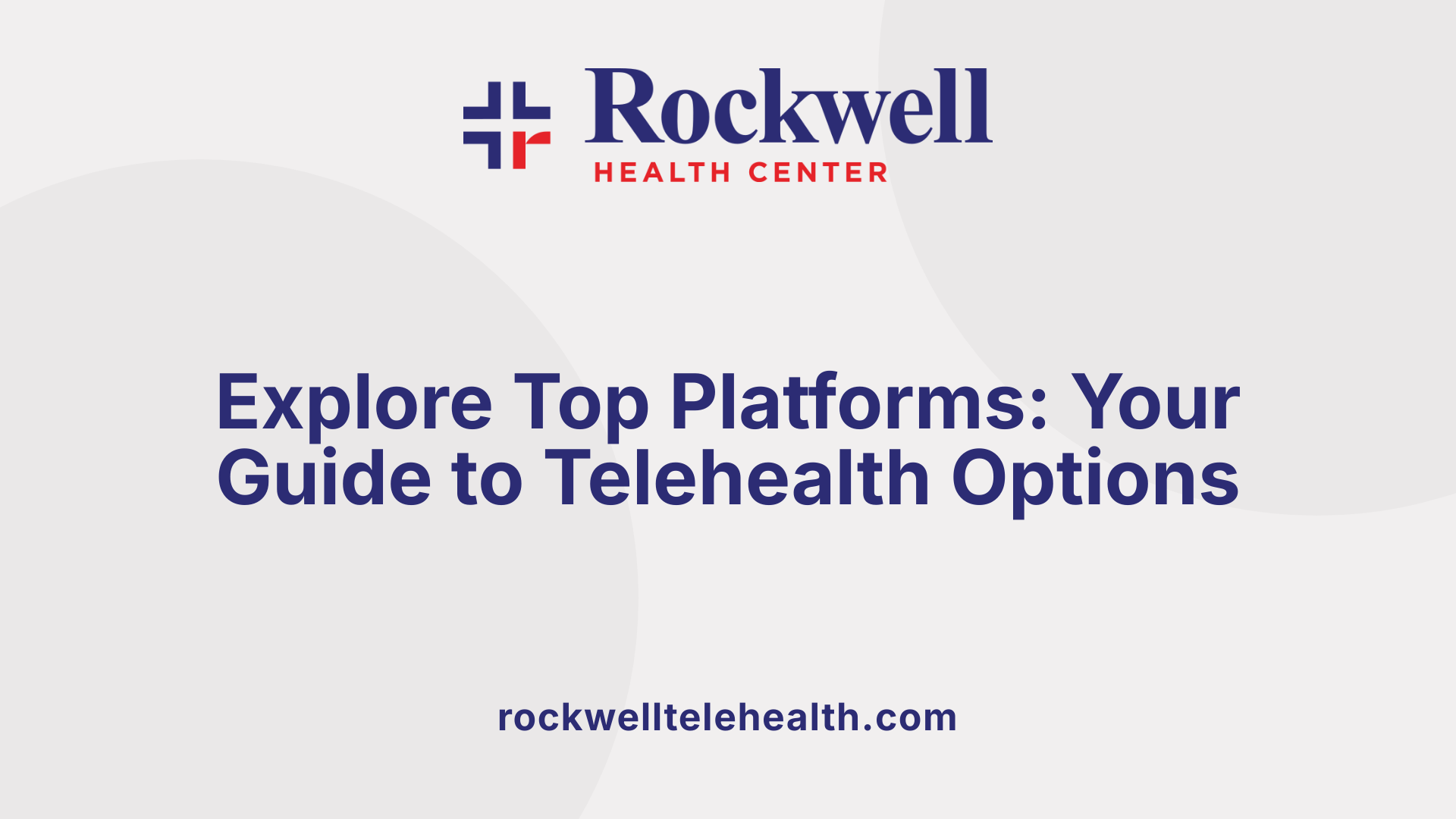
What are some popular telehealth platforms and options available for convenient healthcare access?
Several well-known telehealth platforms have emerged as reliable options for getting medical care remotely. Leading platforms like Teladoc Health, Amwell, MDLIVE, and specialized apps such as Sesame Care, PlushCare, and Doctor On Demand provide a wide range of services. These services include primary care, urgent care, mental health counseling, dermatology, and management of chronic conditions.
For example, Amwell offers 24/7 access to medical and behavioral health professionals across all 50 states, making it possible for users to consult from home at any time. Sesame Care focuses on urgent needs, providing same-day virtual visits starting at $34, without requiring insurance, which streamlines quick access for busy individuals.
Beyond individual consumer apps, many platform solutions are designed for healthcare providers and institutions. Platforms like Doxy.me, VSee, eVisit, and Caregility support hospitals and clinics by providing integrated solutions including electronic health record (EHR) integration, remote monitoring, appointment scheduling, and secure communication.
These services often support multiple communication methods such as video calls, audio-only consultations, and asynchronous messaging, which can include exchanging images, prescriptions, or lab results. This variety increases accessibility for patients with different preferences or limited internet bandwidth.
As telehealth continues to grow, especially post-pandemic, more options are available to meet diverse health needs. Patients can choose platforms based on their specific health requirements, provider availability, and preferred technological features.
| Platform/Service | Focus Area | Features | Payment and Accessibility |
|---|---|---|---|
| Teladoc Health | General medicine, mental health | 24/7 access, board-certified doctors, prescription delivery | Insurance-accepted, broad provider network |
| Amwell | Primary, urgent, behavioral health | 24/7 service, all states, EHR integration | Insurance-inclusive, app and web access |
| MDLIVE | General, mental health, dermatology | Quick appointments, prescriptions, multi-channel support | Insurance support, transparent pricing |
| Sesame Care | Urgent care, specialty services | Same-day virtual visits, no insurance required | Direct pay, no insurance necessary |
| PlushCare | Wide range, chronic conditions | Same-day appointments, diagnostics, prescriptions | Major insurance accepted |
| Doctor On Demand | Minor illnesses, mental health | Flexible scheduling, no subcription needed | Insurance-compatible |
This array of platforms illustrates the versatility and convenience of telehealth, making healthcare more accessible and adaptable to modern lifestyles.
Scheduling, Security, and Accessibility Features for Busy Lifestyles
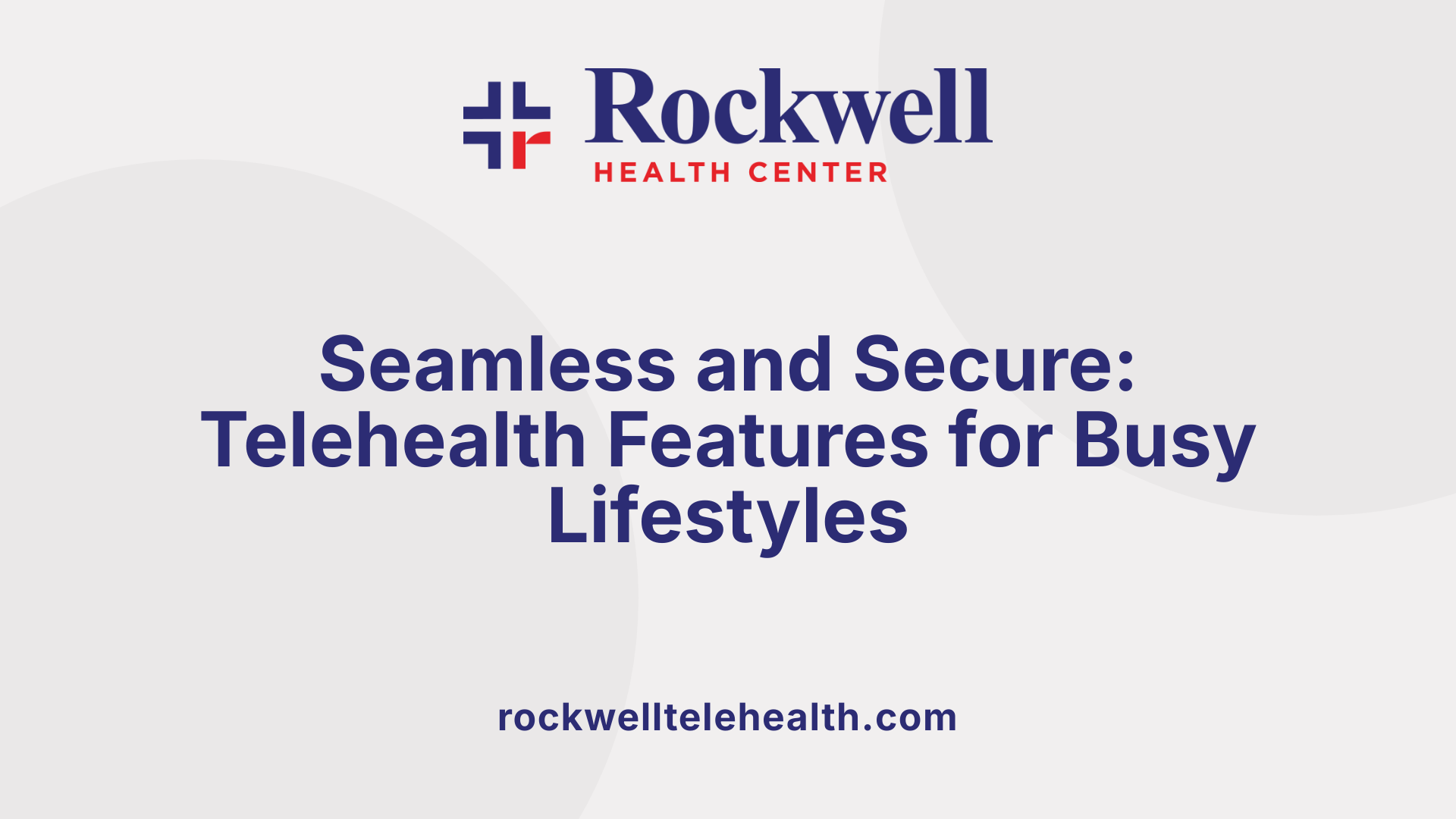 Telehealth platforms are designed with features that cater to the needs of busy individuals, ensuring seamless access to healthcare services. Flexible scheduling options such as same-day appointments and asynchronous visits allow patients to receive care whenever it suits their routines, reducing wait times and fitting into tight schedules.
Telehealth platforms are designed with features that cater to the needs of busy individuals, ensuring seamless access to healthcare services. Flexible scheduling options such as same-day appointments and asynchronous visits allow patients to receive care whenever it suits their routines, reducing wait times and fitting into tight schedules.
Security is a top priority in telehealth. Platforms employ encryption technologies to safeguard data during transmission and storage, ensuring patient privacy. Secure platforms, along with staff training on privacy practices, maintain confidentiality and comply with HIPAA standards. These measures foster trust and protect sensitive health information.
Accessibility is another critical aspect. Multi-device platforms enable patients to connect via smartphones, tablets, or computers, providing convenience and flexibility. User-friendly interfaces simplify navigation, making it easy for users of all ages and technical proficiency to access services.
Legal standards like the Americans with Disabilities Act (ADA) guide the development of accessible features. These include customizable interfaces and communication aids, such as screen readers or subtitles, to support diverse populations, including those with disabilities.
Additionally, many telehealth services operate 24/7, offering around-the-clock availability. This, combined with intuitive design and accommodations for various communication needs, ensures that patients can obtain timely care without hassle. Overall, these features collectively enable busy lifestyles by making telehealth more convenient, secure, and inclusive.
Supporting Mental Health and Wellness Through Telehealth

How can telehealth solutions support mental health and wellness?
Telehealth has become a crucial resource for mental health care by making support more accessible and flexible. Patients can connect with licensed therapists, psychiatrists, or counselors via secure video calls, phone consultations, messaging, or email from the comfort of their homes.
These virtual platforms offer a variety of services such as mental health assessments, therapy sessions, medication management, and ongoing support for conditions like anxiety, depression, PTSD, and bipolar disorder. This variety allows personalized treatment plans catered to individual needs.
One of the main advantages of telehealth is its ability to reach populations who traditionally face barriers to in-person care. People living in remote areas, those with mobility challenges, or individuals concerned about stigma associated with mental health treatment find virtual care more approachable.
The convenience of receiving therapy or medication support from home often leads to increased engagement, better adherence to treatment, and improved outcomes. Patients report higher satisfaction levels because these services fit easily into their busy schedules.
During health crises like the COVID-19 pandemic, telehealth has played an essential role in maintaining continuous mental health support without risking exposure or disrupting daily routines.
In summary, telehealth broadens access, enhances treatment consistency, and promotes overall mental well-being by providing private, immediate, and customized mental health care options.
Practical Considerations and Future Directions
What practical considerations should be taken into account when incorporating telehealth into a modern healthcare approach?
Implementing telehealth effectively requires careful planning and attention to several practical factors. First, choosing a platform that complies with the Health Insurance Portability and Accountability Act (HIPAA) is essential to protect patient privacy. These platforms should also support integration with electronic health records (EHR) to ensure seamless data sharing and documentation.
Staff and patient training are vital. Providers need to be familiar with the technology, including how to troubleshoot common issues, while patients should understand how to access and use telehealth services securely from home or mobile devices.
Ensuring privacy and data security must be a top priority. This involves establishing private, quiet environments for virtual visits, safeguarding protected health information, and setting up legal agreements like Business Associate Agreements (BAAs) with technology vendors.
Identifying which types of medical encounters are suitable for telehealth is another key step. Routine mental health visits, medication management for chronic conditions, and minor acute illnesses are often appropriate, whereas complex cases may still require in-person assessments.
Ongoing workflow evaluation and stakeholder engagement are crucial. Regularly assessing the efficiency of telehealth processes, collecting feedback from users, and involving healthcare staff in continuous improvement efforts help maintain quality and adaptability.
Finally, planning for sustainability involves strategic investment in technology, staff training, and patient education. Establishing clear policies and workflows ensures that telehealth delivers long-term benefits while maintaining high standards of care.
By addressing these considerations, healthcare providers can successfully integrate telehealth into their services, expanding access, enhancing patient experience, and improving health outcomes.
The Role of Telehealth in Patient-Centered, Accessible Care
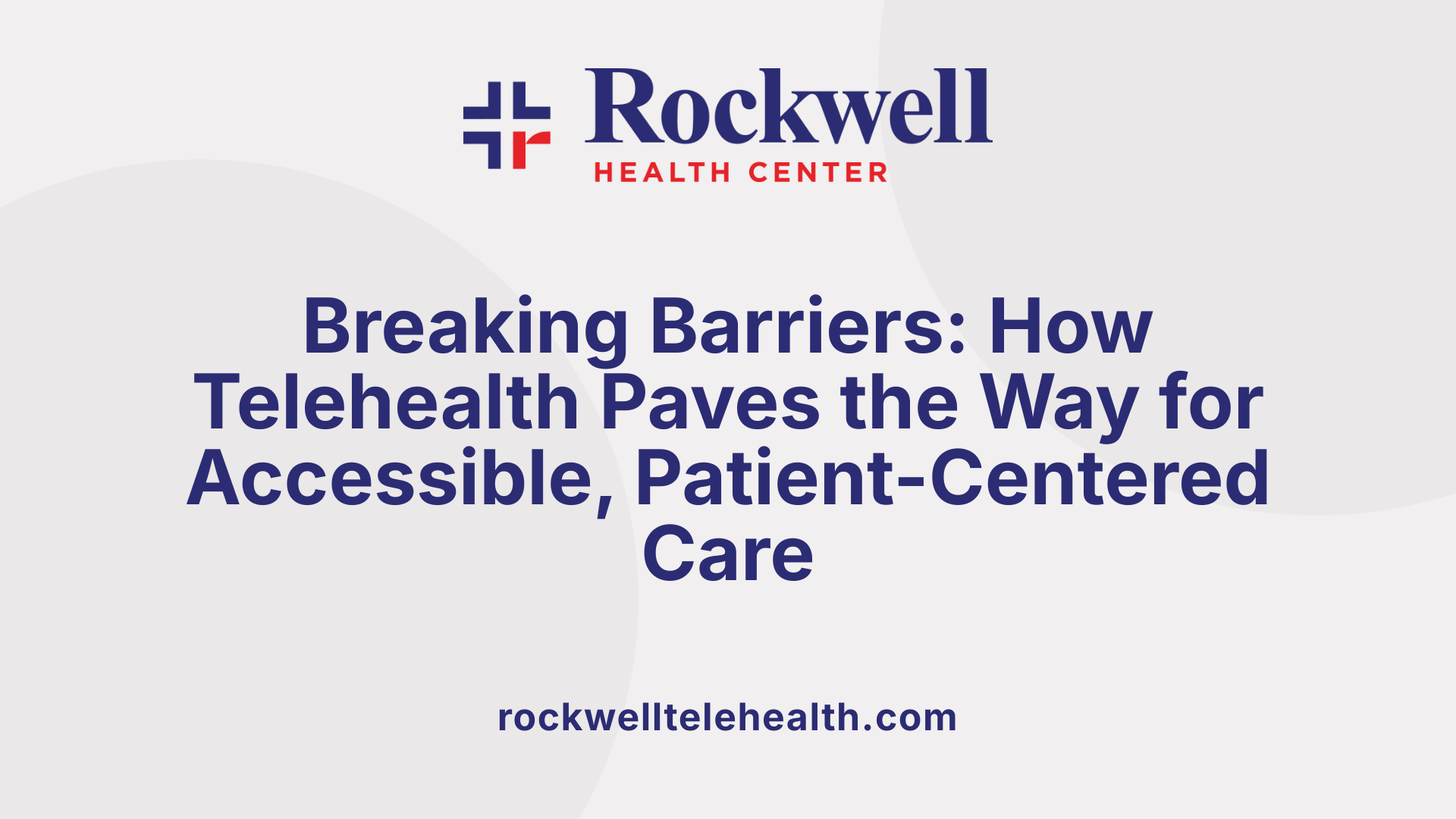
How does telehealth help break down geographic and transportation barriers?
Telehealth significantly improves healthcare access for people living in rural or remote areas where medical facilities may be scarce. By connecting patients directly with healthcare providers through secure video calls, it removes the need for lengthy travel or transportation arrangements. This is especially beneficial for seniors, those with mobility challenges, or individuals with busy schedules, as they can receive medical attention without leaving their homes.
How does telehealth support continuous monitoring and timely interventions?
Through remote monitoring devices and regular virtual check-ins, telehealth enables ongoing assessment of chronic conditions like hypertension or diabetes. Patients can report symptoms and share health metrics from home, allowing providers to intervene early and adjust treatments promptly. During urgent situations, immediate access to healthcare professionals helps address symptoms quickly, often preventing unnecessary ER visits.
How does telehealth support personalized treatment plans and increase patient engagement?
Digital tools such as telehealth platforms allow for tailored healthcare experiences. Patients can discuss their unique concerns and preferences during virtual visits, fostering better understanding and shared decision-making. Platforms often provide educational resources and continuous support, encouraging active participation in health management and leading to improved adherence and outcomes.
How does telehealth facilitate collaboration among healthcare professionals?
Telehealth platforms enable different healthcare providers—such as primary care physicians, specialists, and mental health counselors—to communicate and coordinate care effectively. This collaboration ensures comprehensive treatment plans, reduces redundant tests, and improves overall patient care quality. Shared digital records and virtual interdisciplinary meetings enhance teamwork and continuity.
How does telehealth enhance communication and promote value-based, equitable healthcare?
By making healthcare more accessible and convenient, telehealth reduces disparities caused by transportation issues, work constraints, or provider shortages. Its flexibility encourages more consistent follow-ups and preventive care, aligning with value-based care models focused on improving health outcomes efficiently and fairly. Secure, HIPAA-compliant communication channels protect patient privacy while fostering trust and engagement.
| Aspect | Benefits | Additional Details |
|---|---|---|
| Accessibility | Breaks geographical and transportation barriers | Connects rural populations and those with mobility issues |
| Continuous Care | Enables ongoing monitoring and quick interventions | Helps manage chronic conditions effectively |
| Personalization | Tailors treatment plans to individual needs | Increases patient engagement and satisfaction |
| Collaboration | Facilitates professional teamwork | Improves treatment coordination |
| Equity & Communication | Promotes fair access and better provider communication | Supports value-based healthcare models |
In summary, telehealth enhances the delivery of personalized, accessible, and equitable healthcare by leveraging digital tools to overcome traditional barriers, support ongoing care, and foster collaboration among healthcare professionals.
A Seamless Future for Healthcare
As telehealth continues to evolve, its integration into our daily lives promises a future where healthcare is more accessible, personalized, and efficient. For busy individuals, this means fewer obstacles to receiving competent medical care and greater involvement in health management. With the continual enhancement of technological features, security, and a patient-centric approach, telehealth will empower users to prioritize their health without disrupting their routines. Embracing these digital solutions is not just a convenience but a vital step towards a more equitable, sustainable, and responsive healthcare system that caters to everyone’s needs, regardless of their hectic schedules.
References
- 11 Telehealth Services Worth Trying in 2025
- 7 Best Telemedicine Providers for Immediate Care
- Video Visits | KY, IN & OH | St. Elizabeth Healthcare
- Telemedicine in Los Angeles: Accessing Virtual Care
- Telehealth: Balancing Professional Work and Well-Being
- Telehealth Services in Minnesota
- Telemedicine Services in Arlington
- 7 Affordable Telehealth Services in OKC



















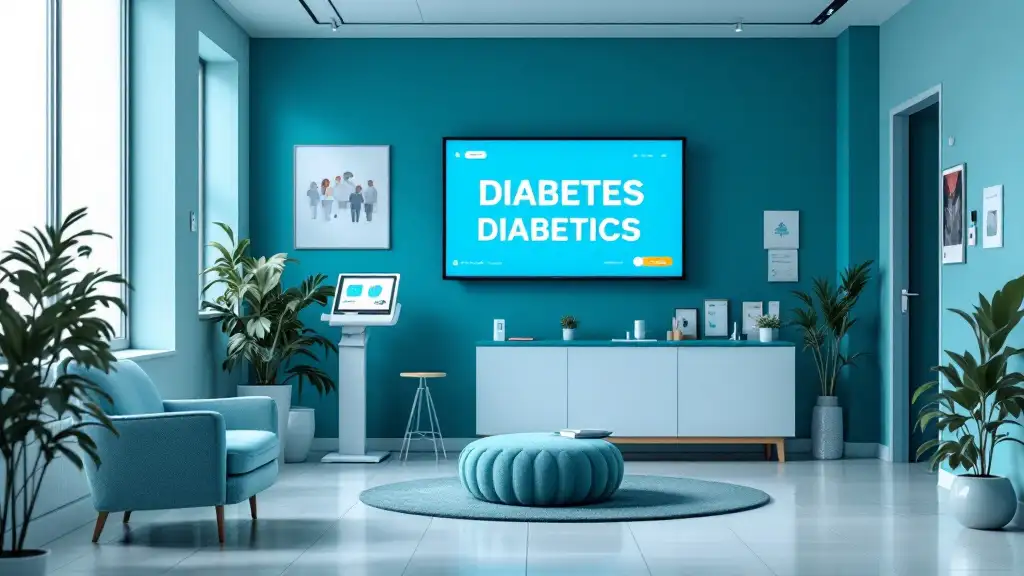
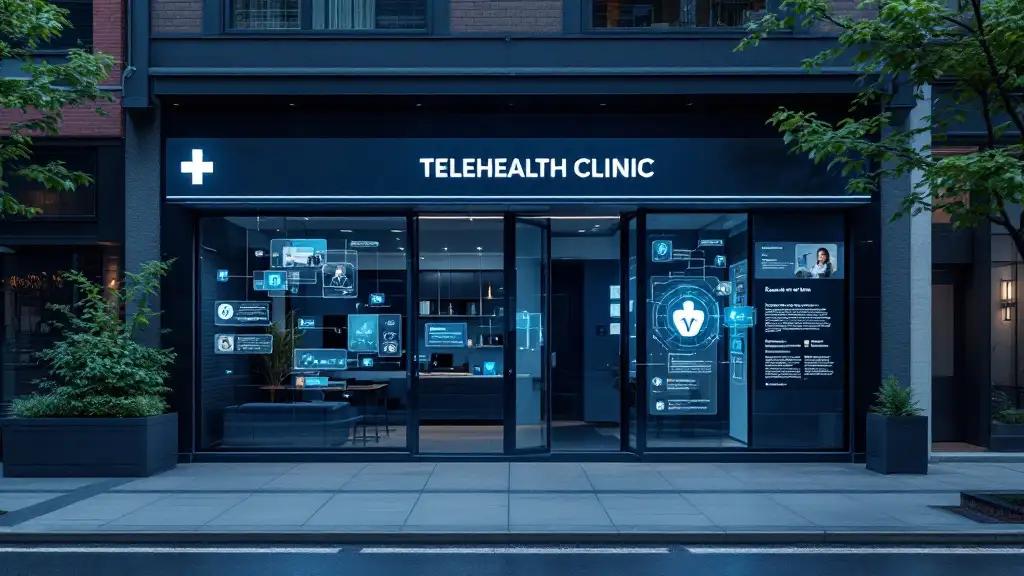



































































.png)